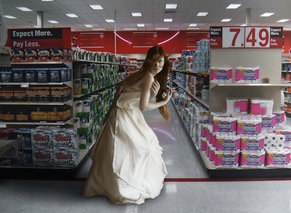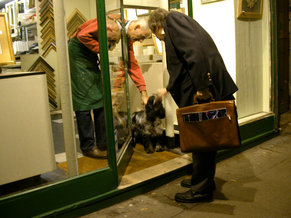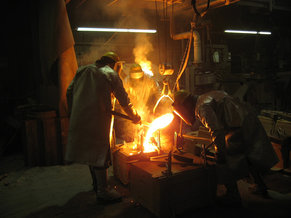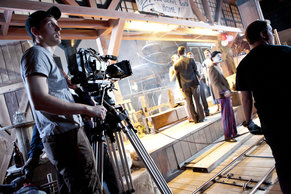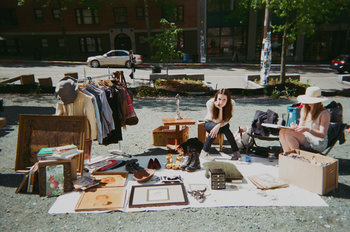
Convenience Products
Convenience products are products that customers buy without much of a decision making process. These are mostly everyday inexpensive things. In this category, brand recognition is important as customers are likely to buy products they recognize.Beverages | Candy |
Cosmetics | Food |
Over-the-counter Medicine | Small Household Items |
Shopping Products
Products that often involve a relatively intensive decision making process on the part of the customer. In this category, there is some room for brands that customer's don't recognize simply because they are thinking more about the purchase.Appliances | Clothing |
Electronics | Hobby Supplies |
Home Improvement Goods | Sporting Goods |
Tools | Vehicles |
Heterogeneous Products
Shopping products that are differentiated with functions, features and customer experience. This allows niche producers to compete if barriers to entry aren't too high.Bicycles | Drills |
Fishing Equipment | Mobile Devices |
Speakers & Headphones | Toys |
Vacuum Cleaners | Video Games |
Homogeneous Products
Products that don't have meaningful differences in functions and features but are worth a decision making process due to quality, brand, price or style. Not to be confused with a commodity.Backpacks | Cutlery |
Fashion | Footwear |
Jewelry | Sunglasses |
Commodities
A commodity is a product that customers view as interchangeable and identical. In this case, consumers purchase on price alone such that producers have to accept a market price.Apples | Chemicals |
Economy Flights | Electricity |
Gold | Low Tech |
Paper | Wood |
Premium Products
Products that offer greater quality than a standard item. This can include any type of product, including commodities whereby a producer tries to stand out from the crowd based on quality. Small firms can often compete using this strategy.Artisanal Food | Fine Dining |
Handcrafted Items | Healthy Food |
High Quality Tools | Limited Edition Books |
Luxury
Expensive products that target customers with little or no price sensitivity. This includes products that target the wealthy and product categories where people like to overspend such as weddings and fashion.Events | Jewelry |
Luxury Cars | Luxury Fashion |
Luxury Home Furnishings | Luxury Travel |
Posh Restaurants | Spas |
Affordable Luxury
Successful luxury brands come to symbolize various types of social status, particularly wealth. It is common for such brands to leverage this status with somewhat less expensive versions of products that are sold on brand image alone, often with a minimum level of quality. Such brands are often careful to differentiate between the luxurious and affordable versions of their products so as to retain their luxurious image.Chocolates | Compact Sized Cars From a Luxury Brand |
Cosmetics | Fashions |
Handbags | Jewelry |
Perfumes | Tiny Rooms in a Posh Hotel |
Inferior Goods
An inferior good is a product that people purchase less as their income rises. This indicates high price sensitivity, although inferior goods aren't necessarily commodities.Convenience Foods | Fast Food |
Payday Lending | Secondhand Goods |
Fast Moving Consumer Goods
Fast moving consumer goods are supplies that run out quickly such that customers purchase them frequently. This tends to be lucrative and therefore highly competitive such that large firms dominate.Bottled Water | Bread |
Breakfast Cereal | Cleaning Products |
Milk | Shampoo |
Soft Drinks | Toothpaste |
Latent Need
A latent need is a customer need that customers don't know they have until an innovative product arrives that represents a leap forward in some way. Discovering a latent need can create a large new market. The following are historical examples.Automobile | Home Computer |
Internet Connectivity | Microwave Oven |
Radio | Smart Phone |
Streaming Media | VCR |
Unsought Goods
Unsought goods are products and services that are no fun to buy such that customers have low motivation and interest. This includes depressing things like your funeral and the replacement of expensive capital that consumers and businesses would prefer to defer until absolutely necessary.Airplanes | Fire Extinguishers |
Funeral Services | Infrastructure Maintenance |
Life Insurance | New Pipes (Plumbing Renovation) |
Roofing Renovation | Safety Equipment |
Complementary Goods
Products and services that can be used together in some way such that their demand is related. This may allow small firms to benefit from the products of large firms. In many cases, large firms also benefit from this situation whereby small firms add variety and value to their products.Homes & Real Estate Agents | Mobile Phones & Apps |
Movies & Merchandise | Printers & Ink |
Razors & Blades | Snowboards & Snowboard Cases |
Software & Consulting | Streaming Music Apps & Music |
Specialty Products
Specialty products, also known as niche products, target relatively obscure customer needs. This strategy may be adopted by small firms hoping to avoid direct competition with larger firms. Some large firms compete in this area by creating large numbers of product variations to serve different niches they refer to as segments.Alpine Snowboard | Clubs That Play Obscure Genres of Music |
Collectors Items | Fashion Styles |
Gothic Jewelry | High Performance Hammers |
Hobby Goods | Traditional Foods |
Electronic Products
Products that have no physical form. These can normally be scaled infinitely at close to zero cost such that they have extremely favorable economics. However, they can be expensive to develop and market.Ebooks | Mobile Apps |
Music | Software |
Video Games | Virtual Items |
Services
Services are products that mostly offer intangible value. For the past 50 years, advanced economies have been shifting towards a service economy whereby services produce more sales than products.Business Outsourcing | Coaching |
Consulting | Entertainment |
Events | Financial Services |
Gyms & Spas | Hospitality |
Insurance | Leisure Services |
Media | Mobile Subscriptions |
Night Economy | Recreation Services |
Restaurants | Social Media |
Software Services | Streaming Media |
Telecom Services | Training |
Transportation | Travel Services |


